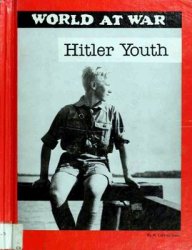And, in fact, after the conference of March 20, Rommel had received from the Fiihrer the right to have Panzergruppe "West” put immediately under his direct command. This force, under General Geyr von Schweppenburg, constituted Rundstedt’s armoured reserve and, on D-Day, consisted of:
1. I Waffen S. S. Panzer Corps;
2. 1st "Leibstandarte Adolf Hitler” S. S. Panzer Division (at Beverloo, 45 miles east of Antwerp);
3. 2nd Panzer Division (at Amiens);
4. 116th Panzer Division (in the Gisors-Beauvais region);
5. 12th ''Hitlerjugend” S. S. Panzer Division (in the Evreux-Lisieux region);
6. 130th Panzer-"Le/ir” Division (near Chateaudun); and
7. 21st Panzer Division (at Saint-Pierre-sur-Dives, 20 miles south-east of Caen). But no order had come from O. K.W. to
Give executive force to Hitler’s concession. And so Schweppenburg refused the role which Rommel allotted to him. His view was that the Western Front’s armoured reserve should be concentrated in a central position downstream from Paris, so that it could intervene with all its strength in that sector where it looked as if the enemy was about to make his main push, after all tricks and feinting movements had been discounted. From this point of view, the way that Army Group ”B” at la Roche-Guyon wanted to distribute the Panzers seemed to fit the verdict that Frederick the Great had proclaimed against all systems of wide-stretched defence: "Wer alles defendieren will, defendiert gar nichts” (He who tries to defend everything, defends nothing).
Rundstedt, and also Colonel-General Guderian, agreed with this point of view, which could clearly be defended on the principles of war. But were they applicable in those circumstances? Rommel denied that they were and cited as an example, as has been seen, his North African experience. His opponents had not had this experience as they had all come from the Eastern Front, where the enemy’s tactical air force was only just beginning to show its power to paralyse ground movement. Events showed that his reasoning was without doubt the more pertinent. However that may be and in spite of his attempt on April 23, Rommel received no satisfaction on this vital point. Better-or worse still-depending on one’s point of view, the Fiihrer was equally negative when Rommel suggested that he should advance the Panzer-"Le/ir” Division to between the Orne and the Vire, deploy the "Hitler-jugend” Division in the region of Saint-L6, and reinforce this sector, which seemed dangerously weak to Rommel, by a brigade of Nebelwerfers (976 15-, 21-, and 30-cm barrels) and a large number of heavy (8.8-cm) anti-aircraft batteries. Faced with silence from Hitler, Rommel left la Roche-Guyon at dawn on June 4 for Berchtesgaden, not without having consulted his barometer and obtained Rundstedt’s leave.




 World History
World History









